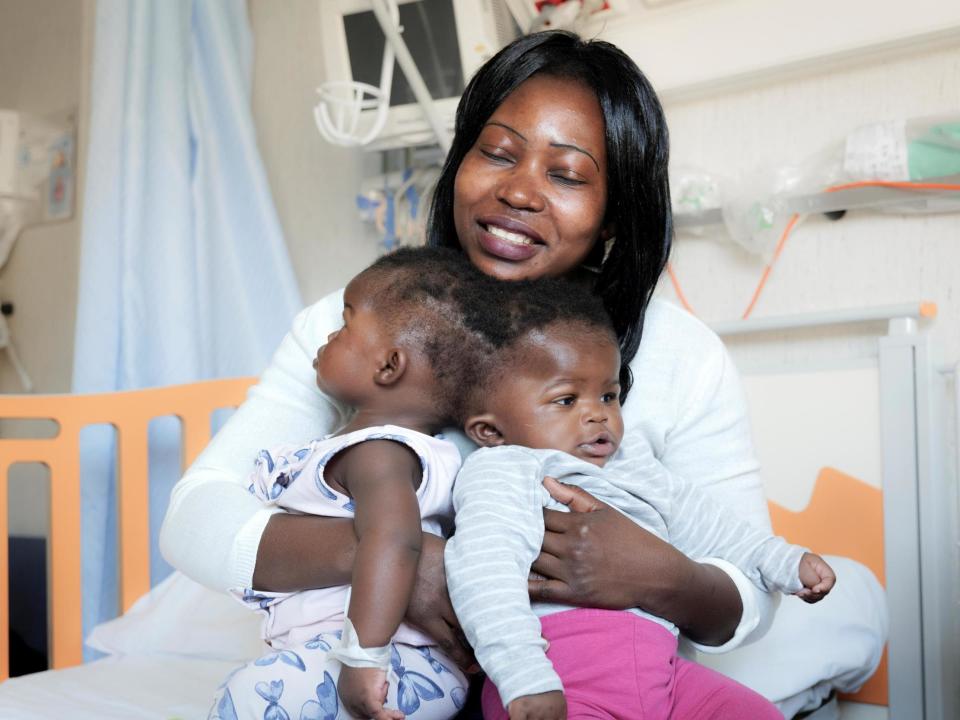Twins born with connected skulls separated in rare surgery

Two-year-old twins who were conjoined at the head have been successfully separated after a rare surgery, according to doctors at the Vatican’s children’s hospital.
Ervina and Prefina Bangalo were born with their skulls connected at the back, and shared critical blood vessels around their brains.
Doctors at the Bambino Gesu Paediatric Hospital had been working for nearly two years planning and executing their separation.
At a press conference to announce the outcome of the sisters’ surgery, Dr Carlo Marras, who led the team, said the twins were expected to have a normal life after a period of rehabilitation.
There have been successful separation surgeries in the past of twins joined at the head, but most have been for twins whose heads were fused at the top.
The two-year-old twins were born in Mbaiki, Central African Republic, with their skulls joined back-to-back in what is known as “total posterior craniopagus”.
The Bambino Gesu Paediatric Hospital, which is Vatican-owned but operates within the Italian public health system, brought the twins and their mother to Italy soon after their birth.
The hospital said the toddlers are recovering well a month after their third and definitive separation surgery on 5 June.
Video showed the girls waving along to music from their beds, clapping and holding markers, as well as celebrating their second birthday in their mother’s arms as hospital staff sang “Happy Birthday” to them in Italian.
The final, 18-hour surgery last month to physically separate them involved a team of 30 doctors and nurses, who made use of 3D imaging and neurosimulators.
Before the separation surgery, members of the Vatican hospital’s staff gave the girls mirrors so they could see one another.
They knew what each other sounded like, but the mirrors helped them associate facial expressions with their personalities and sounds, Dr Marras said.
“It was an experience that wasn’t just professional but above all human: to think that you can arrive at something that we had only imagined, with all the possibilities of failure,” he said. “It was a magical moment.”
Dr Marras said there was only one previously known case of a separation of twins conjoined at the back of the head, performed in the United States during the 1980s.
He said the outcome in that case was poor.
He was referring to the 1987 surgery at Johns Hopkins University by a team led by Dr Ben Carson, now the US housing secretary.

Both twins suffered serious neurological problems; two years after the surgery, one of the boys was reportedly in a vegetative state and the other had severe developmental delays.
In the case of the sisters from Central African Republic, Dr Marras said the girls so far have suffered no neurological harm.
The twins’ mother, Ermine Nzotto, wiped tears from her eyes as she watched a video prepared by the hospital of the twins’ before and after their separation.
Ms Nzotto said she hopes her daughters will go on to become doctors, and “save the other children of this world”.
Additional reporting by Associated Press
Read more
Conjoined twins who shared a liver separated in six-hour operation
Girls conjoined at head separated by 35-strong medical team
Conjoined twins joined at skull separated after 50 hours of operations
Conjoined twins in Yemen die after not receiving urgent treatment

